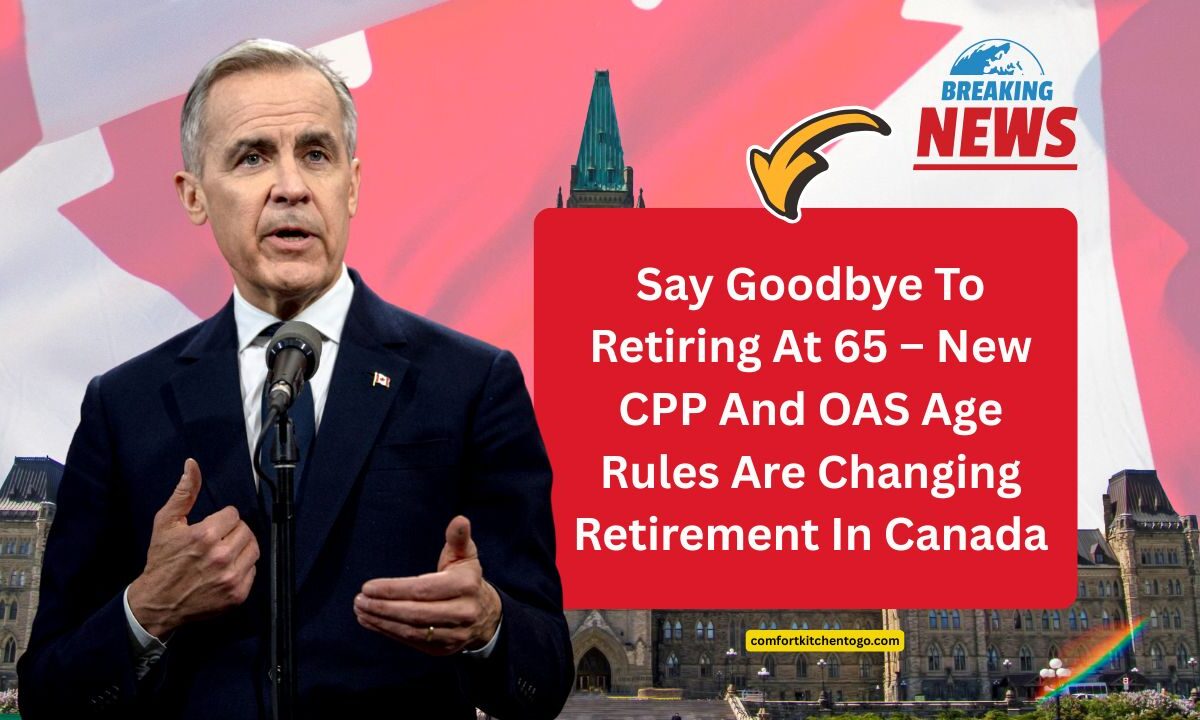The idea of retiring at 65 has long been seen as the gold standard in Canada. But with new changes to Canada Pension Plan (CPP) and Old Age Security (OAS), that traditional milestone is quickly becoming outdated.
Canadians are living longer, working longer, and facing rising living costs—prompting many to rethink what retirement truly means.
Today, retirement is no longer a one-size-fits-all model. With new incentives for delaying benefits, shifting demographics, and a changing economic climate, your retirement strategy may need a fresh look.
Why Retiring at 65 Is No Longer the Norm
Several major trends are reshaping how Canadians retire:
1. Longer Lifespans
Canadians are now living well into their 80s and beyond, turning retirement into a 25- to 30-year journey. This extended life expectancy demands greater savings and more strategic planning.
2. Rising Living Costs
Housing, food, healthcare, and daily necessities are all more expensive today than ever before. Many people simply can’t afford to stop working at 65, especially without robust pensions or personal savings.
3. Changes to CPP and OAS
Although CPP and OAS are still available starting at 60 and 65 respectively, new incentive structures are pushing Canadians to delay their benefits for higher monthly payments.
How CPP and OAS Payments Work in 2025
Let’s break down how the age you start your benefits affects what you’ll receive:
| Benefit Type | Earliest Start Age | Standard Start Age | Latest Start Age | Max Monthly Increase if Delayed to 70 |
|---|---|---|---|---|
| CPP | 60 | 65 | 70 | +42% |
| OAS | 65 | 65 | 70 | +36% |
- CPP: Starting at 60 reduces your benefit by 0.6% per month, equating to a 36% reduction if you claim early. But if you wait until 70, your payment rises by 0.7% per month—a 42% boost.
- OAS: If you delay collecting OAS until 70, you’ll receive a 36% increase over the standard rate.
Will the Retirement Age Rise in Canada?
While there’s no official increase to the retirement age, there’s growing pressure to revisit this policy. Back in 2016, a proposal to raise the OAS age to 67 was rolled back—but the issue remains alive.
Other countries like Australia, the U.K., and the U.S. have already started raising their retirement ages.
As the Canadian population ages and the working-age base shrinks, similar changes could be reintroduced in future policy updates.
Canadians Working Beyond 65
Retirement is no longer a full stop. Statistics Canada reports that around 20% of Canadians aged 65 and older are still in the workforce, double the rate seen in the early 2000s.
People work longer not just for financial reasons, but also for:
- Purpose and fulfillment
- Social connection
- Flexible part-time or consulting roles
This shift represents a new retirement reality: a gradual, personalized transition instead of an abrupt exit from work life.
Modern Retirement Planning Tips
Planning for retirement in 2025 and beyond is about flexibility and personalization. Here’s how to make sure you’re ready:
1. Know Your Income Sources
Calculate your expected CPP, OAS, RRSPs, private pensions, and other income streams.
2. Estimate Expenses
Account for rising costs, especially for healthcare, housing, and travel.
3. Stay Flexible
Your plans might need to shift due to health, market changes, or family needs. Build in room for adjustment.
4. Seek Professional Advice
A certified financial advisor can help craft a retirement plan tailored to your goals and risk tolerance.
Retirement in Canada is no longer tied to turning 65. The new CPP and OAS changes for 2025 give Canadians more control but also more responsibility when it comes to planning their futures.
With people living longer, costs rising, and work habits changing, retirement has become a journey—not a destination.
Rather than focusing on a number, consider your financial readiness, personal goals, and lifestyle preferences. Whether you retire at 60, 65, 70, or somewhere in between, what matters most is having a plan that works for you.
FAQs
How much more do I get if I delay CPP to age 70?
Delaying CPP to age 70 can increase your monthly payments by up to 42% compared to claiming at 65.
Is OAS still available at 65?
Yes, OAS starts at 65, but delaying to 70 increases your payments by 36%.
Is Canada planning to raise the retirement age?
Not officially—but it’s being discussed. Future policy changes may align with trends in other developed nations.
